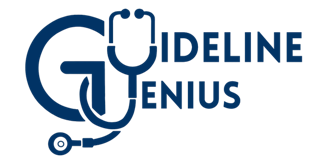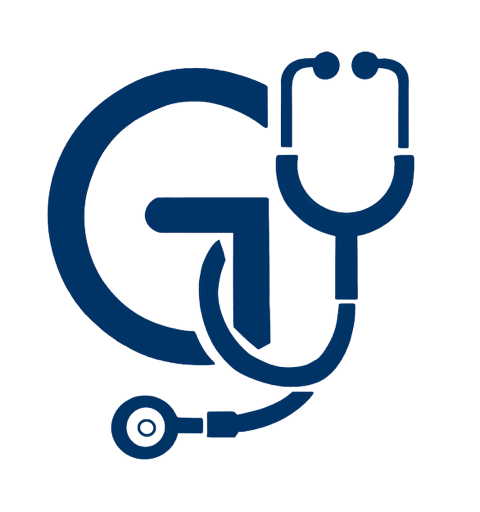Human Immunodeficiency Virus (HIV)
BASHH/BHIVA guidelines (see below for individual references).
HIV Investigation and Diagnosis Guidelines
HIV testing is recommended in:
- People with features consistent with an HIV indicator condition
- People with HIV +ve sexual partners
- People attending the following services
- Sexual health
- Addiction and substance misuse
- Antenatal
- Termination of pregnancy
- Hepatitis B and C, TB and lymphoma
- People commencing chemotherapy or immunosuppressive or immunomodulatory therapy
- People belonging to groups at increased risk of exposure to HIV
- MSM
- Female sexual contacts of MSM
- Black Africans
- Current or prior injecting drug use
- Sex workers
- Prisoners
- Trans women
- From country with high diagnosed seroprevalence (>1%)
- Sexual contact with anyone from a country with high diagnosed seroprevalence (>1%)
- People accessing primary and secondary healthcare in areas of high and extremely high HIV seroprevalence (including emergency departments)
- If +ve screening test → immediately perform a on a different sample (ideally a fresh blood sample)
- Do not diagnose HIV based on 1 +ve test
- If -ve screening test → subsequent action depends on whether the testing is performed within the 45-day window period or not
- -ve test <45 days post-exposure → repeat test at ≥45 days
- -ve test ≥45 days post-exposure → no further test needed
If results are +ve from self-tests, confirmatory laboratory testing is required due to a small possibility of a false-positive result.
The 4th-generation combination assay has a window period of 45 days. The window period is the time between exposure and when a test can accurately detect it. Such that if the test is performed within the window period (<45 days post-exposure), there is a chance of false negative.
| Category | Tests |
|---|---|
| HIV-related tests |
|
| Infection screen |
|
| Routine bloods |
|
HIV Management Guidelines - Antiretroviral Therapy (ART)
- Triple therapy (most commonly used) with 2 NRTIs and 1 integrase inhibitor
- Tenofovir AF (NRTI) + emtricitabine (NRTI) + bictegravir
- Tenofovir AF or DX (NRTI) + emtricitabine (NRTI) + dolutegravir
- Abacavir (NRTI) + lamivudine (NRTI) + dolutegravir
- Two-drug ART regimen
- Lamivudine (NRTI) + dolutegravir (integrase inhibitor)
- Strict criteria: no lamivudine resistance + RNA copies <500,000 + CD4 count >200 + no active hepatitis B
Pre-testing for HLA-B*57:01 is necessary before starting abacavir.
Tenofovir DX (disoproxil) is an older oral pro-drug, while tenofovir AF (alafenamide) is a newer oral pro-drug.
Tenofovir DX carries a higher risk of renal and bone toxicity than tenofovir AF.
HIV-2 has intrinsic resistance to all NNRTIs, therefore it is important to avoid them.
1st line: triple ART with 2 NRTI backbone and boosted protease inhibitor
- Tenofovir / abacavir (NRTI) + lamivudine (NRTI) + boosted darunavir (protease inhibitor)
- Minimum yearly review
- Aim for viral load of <50 copies/mL
HIV PrEP (pre-exposure prophylaxis)
-
Condomless receptive anal sex (MSM and trans-women)
-
Condomless sex with HIV +ve partner with VL >200 copies/mL
-
IVDU with shared equipment (not routinely recommended if effective needle-exchange or opioid substitution programmes exist)
There are 2 main dosing regimens:
| Dosing regimen | Suitability | Description |
|---|---|---|
| Daily PrEP | All high-risk individuals | One tablet daily → until 7 days after last exposure |
| On-demand PrEP | Anal exposures ONLY | 2+1+1 (2 tablets pre-sex → 1 tablet 24 hr post sex → 1 tablet 48 hr post sex)
If multiple-day exposure → until 1 tablet daily until 48 hr after last exposure |
It is important to ensure the person is HIV -ve before taking PrEP. As PrEP regimens contain only 2 drugs, if the patient is already HIV +ve, using only 2 agents risks sub-therapeutic suppression (allowing the virus to replicate) and drug resistance.
HIV PEP (post-exposure prophylaxis)
| Type of exposure | Indications |
|---|---|
| Sexual exposure | If index HIV +ve
If index HIV status is unknown
|
| Occupational exposure | Only indicated if index HIV +ve AND any of the following:
|
Key points about the risk of transmission:
- Receptive sex carries a higher risk than insertive sex.
- Anal sex carries a higher risk than vaginal sex.
Baseline tests required before initiating PEP:
- HIV-1 Ag/Ab
- Serum creatinine and eGFR
- Alanine transaminase
- Hepatitis B serology - if not vaccinated or with documented HepBsAb >10 IU
- Chlamydia, gonorrhoea, syphilis testing - if from sexual exposure
- Hepatitis C screening - if from occupational exposure OR those at risk from sexual exposure (e.g. MSM)
Timings:
- Start PEP within 72 hours (ideally <24 hours, guidelines say not to initiate PEP if >72 hours)
- Duration of PEP: 28 days (4 weeks)


